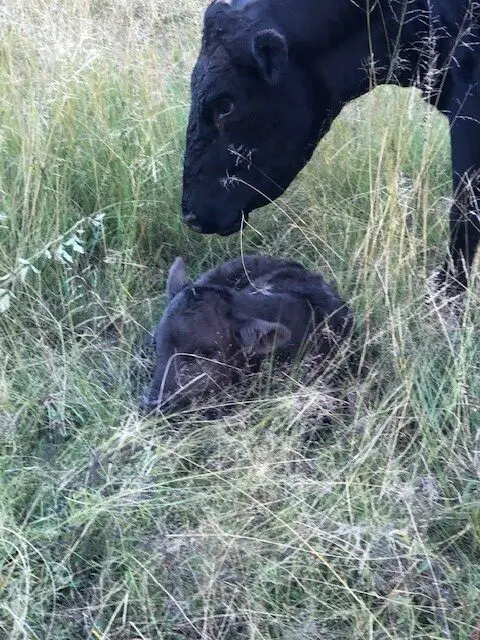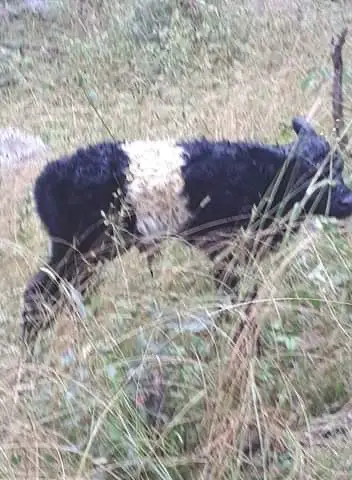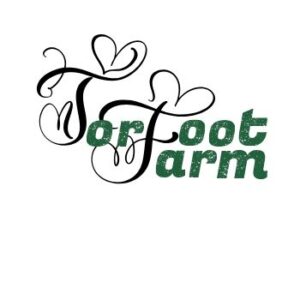
The first time you see a newly birthed calf, if you are anything like me, you just can’t help yourself. They are so cute and a little wobbly on their feet that you can’t help but swell up with love for them.
Like all newborns though they are best left to bond with their mothers to start with. She will softly moan letting him or her know where she is and how to make a start in the world. It truly is wonderful to watch this bonding process if you are lucky enough to find the pair at the right time.
First time mothers whether they are cattle or not seem to have a built in instinct and Belted Galloways are exceptional mothers. As the time draws near for her birth the cow may hide herself away somewhere private or you may find other cows standing close by keeping an eye on the proceedings.
After the calf arrives the proud mumma will be very protective. Don’t go rushing in to see how this miracle occurred but just quietly take your queue from the mother. If she becomes a little protective you are to close. Move back and give her space. She will bring the little one out to show off soon enough.
Calves will attempt to stand fairly soon after birth and make their way to mums udder for their first drink. This first drink will happen anytime in the first 4 hours after birth and is vital for the calf to not only obtain all the goodness in colostrum but also assist in the activation of his tummy. You may notice mum licking him all over but mostly around the tummy area. This process helps to clean the calf of any birth products but also stimulate the action of the rumen.

So what if he doesn’t drink in that first few hours? Look for signs of any issues. Can he stand up? Is he breathing well? Is mum attending to him? Did you miss it – have a look at the teats on the cow. Do they look a bit swollen or larger? Chances are the calf has already drank and you weren’t there to see it. If not then monitor him closely. If he appears lethargic or uninterested you may need to intervene.
Colostrum powder is readily available from most good produce stores or your local vet. Follow the directions on the pack to ensure you mix it correctly. You will also need a feeding teet and bottle. Never try to feed a calf from a bucket. Cattle have 4 stomachs and at birth only the fourth or abomasum is functioning. As they get older the other three stomachs begin to work but during their first few hours of life they really need to be able to stretch the neck muscles and feed from a high position to ensure that milk goes into the fourth stomach. So when bottle feeding be sure to stand firm and strong but always encourage the feeding calf to stand and drink . This helps to activate the stomach and ensures that the milk goes into the right place. Calves that are spluttering are not feeding in the correct position.
Calves that feed direct from the cow do far better and will have all the nutrients they need. If your cow is not feeding the calf or has orphaned it you best get them both into a shelter and call your local vet. The cow may have mastitis or other issues. For the most part though birthing and early feeding of the newborn is taken care of by the cow and you will not need to intervene.
Some sources recommend dipping the calf’s umbillical cord in iodine. This is not a practice we encourage for a couple of reasons. Firstly, nature has provided the perfect management system for the newborn calf – his mother. The cow will clean and lick the calf all over including the umbilical cord. There is no reason for us to intervene in this natural process. Secondly, if we do jump into this process we will upset the mother and interfere with the bonding process. We are far better to let her take charge of her baby – after all – mother knows best. Keep an eye out for the cord drying naturally and falling away. This should occur by the end of the first week. If there is any issues then by all means bring them both into the yards and check for signs of infection or any issues. Being guided by the animal in our experience has always worked well.
In the days and weeks ahead check on the mother and calf every few days to ensure they are bonded and thriving. Don’t be surprised if the cow has wandered away from the calf as long as feeding continues. The best times to check for feeding are early morning and late afternoon. Calves like to play and run around in the mid to late afternoon other times you may find them sleeping under trees or in long grass away from the mother. This is perfectly normal.
Around 6 weeks of age you will need to get both mum and calf into the yards for a quick health check, tagging and immunisation. This is also a good time to begin halter training. Check our article on halter training here.
